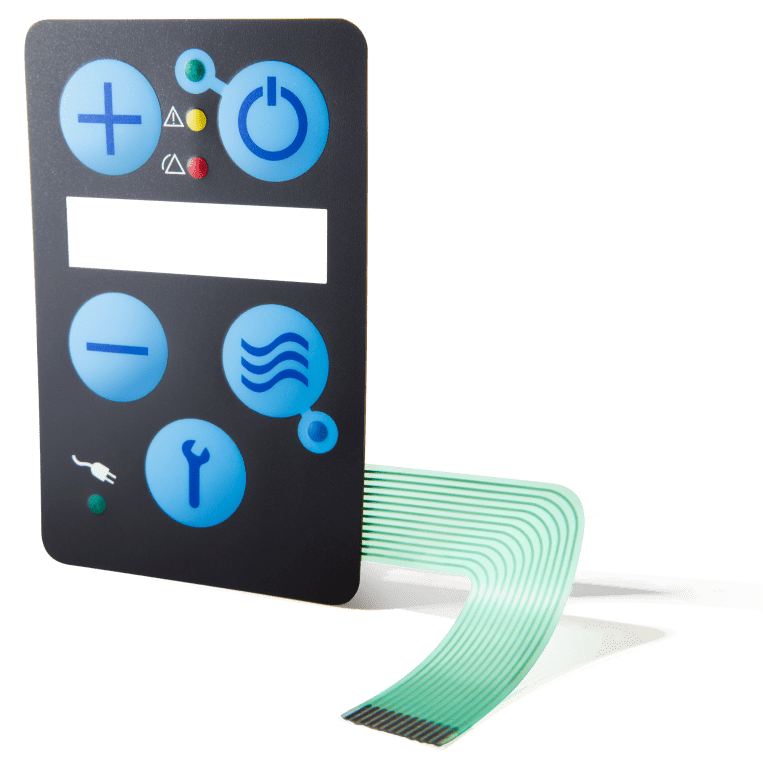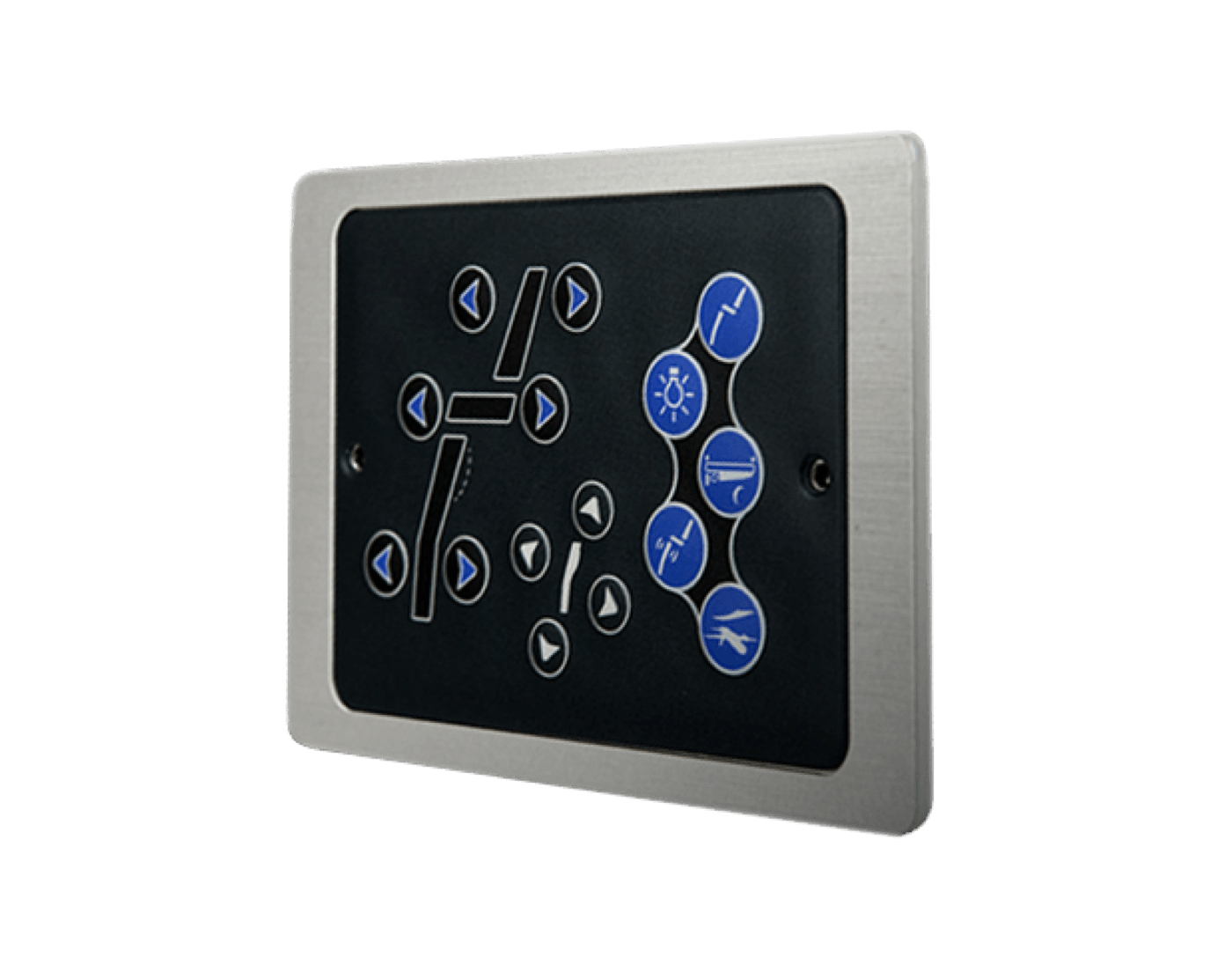Why Membrane Switches Are Vital for Long Lasting Control Solution
Membrane buttons play an essential role in ensuring the durability and integrity of control systems across numerous markets. As we discover the diverse benefits of membrane buttons, it becomes evident that their value transcends plain functionality, affecting user experience and functional efficiency.
Introduction of Membrane Layer Switches
Membrane buttons are versatile and reputable parts commonly used in numerous digital control systems. These buttons are composed of numerous layers, consisting of a visuals overlay, a spacer layer, and a printed circuit layer. The visuals overlay provides both practical and visual style, while the spacer layer guarantees that the buttons are turned on just when pushed. The published circuit layer contains conductive traces that complete an electrical circuit when the membrane layer is pushed, making it possible for the tool to react to user inputs.
Membrane switches are commonly favored in applications needing a small and lightweight design, making them optimal for handheld devices, clinical tools, and commercial equipment. They can be tailored to satisfy details customer needs and can include different functions such as backlighting, tactile feedback, and numerous shades. Membrane buttons are immune to dust, moisture, and contaminants, making them ideal for settings where longevity is necessary.
Advantages of Resilience
In many applications, the longevity of membrane switches deals significant benefits that improve their overall efficiency and dependability. These switches are made to stand up to harsh settings, making them ideal for use in requiring conditions such as high moisture, severe temperature levels, and exposure to chemicals. Their durable construction aids to avoid damages from physical impact, making certain lasting capability and reducing the demand for regular replacements.
Additionally, membrane buttons are resistant to use and tear, which is essential in applications where regular communication happens. This longevity translates to reduce upkeep prices, as organizations take advantage of lowered downtime and fewer service disturbances. Additionally, the encapsulated style of membrane layer switches over safeguards internal elements from dust and wetness access, further contributing to their life expectancy.
One more benefit is their capacity to keep regular performance in time. With a high tolerance for mechanical tension, these switches protect their responsive feedback and electrical stability, making sure customer satisfaction. Ultimately, the sturdiness of membrane layer changes not just improves functional effectiveness yet additionally fosters self-confidence in their reliability, making them a preferred selection for control systems throughout numerous fields.
Applications in Numerous Industries
Sturdy control systems using membrane layer switches find extensive applications across a range of sectors, each profiting from the special qualities these switches provide. In the medical sector, membrane layer switches are crucial for tools such as individual screens and diagnostic tools, where integrity and simplicity of cleaning are critical. Their resistance to moisture and impurities ensures they maintain capability in sterilized environments.
The auto market leverages membrane buttons for dashboard controls my response and infomercial systems, where they give smooth, inconspicuous user interfaces that improve customer experience. These buttons are also created to stand up to harsh problems, including direct exposure to extreme temperature levels and vibrations.
In commercial settings, membrane layer switches are commonly made use of in machinery control board, using tactile comments and resilience essential for high-usage applications. Their capability to resist chemicals makes them appropriate for manufacturing settings where spills and contaminants are constant.

Customer electronic devices, such as kitchen area devices and remote controls, additionally make use of membrane switches for their adaptability and cost-effectiveness. Overall, the adaptability and durable nature of membrane layer changes make them essential throughout numerous sectors, guaranteeing effective procedure and long life in control systems.
Layout and Aesthetic Appeal
While performance is vital, the layout and visual allure of control systems geared up Website with membrane switches play a critical role in user engagement and general experience (membrane switch). The visual style of these switches can significantly influence user perception and interaction. A well-designed membrane switch improves the beauty of the gadget, making it a lot more attractive to individuals and promoting a connection in between the user and the product
Membrane switches offer a lot of flexibility in design, allowing suppliers to tailor graphics, shades, and structures to straighten with brand name identification and product appearances. Using lively colors and distinctive patterns can attract focus, while tactile feedback can enhance the customer's interaction with the device. Additionally, the capacity to integrate LED indicators and backlighting into the membrane layer switch layout supplies both practical and visual advantages, enhancing presence and functionality in various settings.

Enhancing Individual Experience

Moreover, membrane switches can be personalized to include visual interfaces, enhancing functionality by providing info in a clear and user-friendly fashion (membrane switch). This modification can consist of symbols, tags, and shade coding that overview users via facility capabilities easily. Furthermore, their adaptability permits for assimilation in numerous settings, making sure constant efficiency whether in industrial machinery or consumer electronics
The resilience of membrane switches likewise plays an important function in individual experience. By enduring severe conditions and expanded usage, these buttons decrease the possibility of system failures, hence advertising dependability and user confidence. Inevitably, the critical use membrane switches not just raises functionality but additionally dramatically enhances user communication with control systems, making them a crucial part in contemporary design.
Verdict
